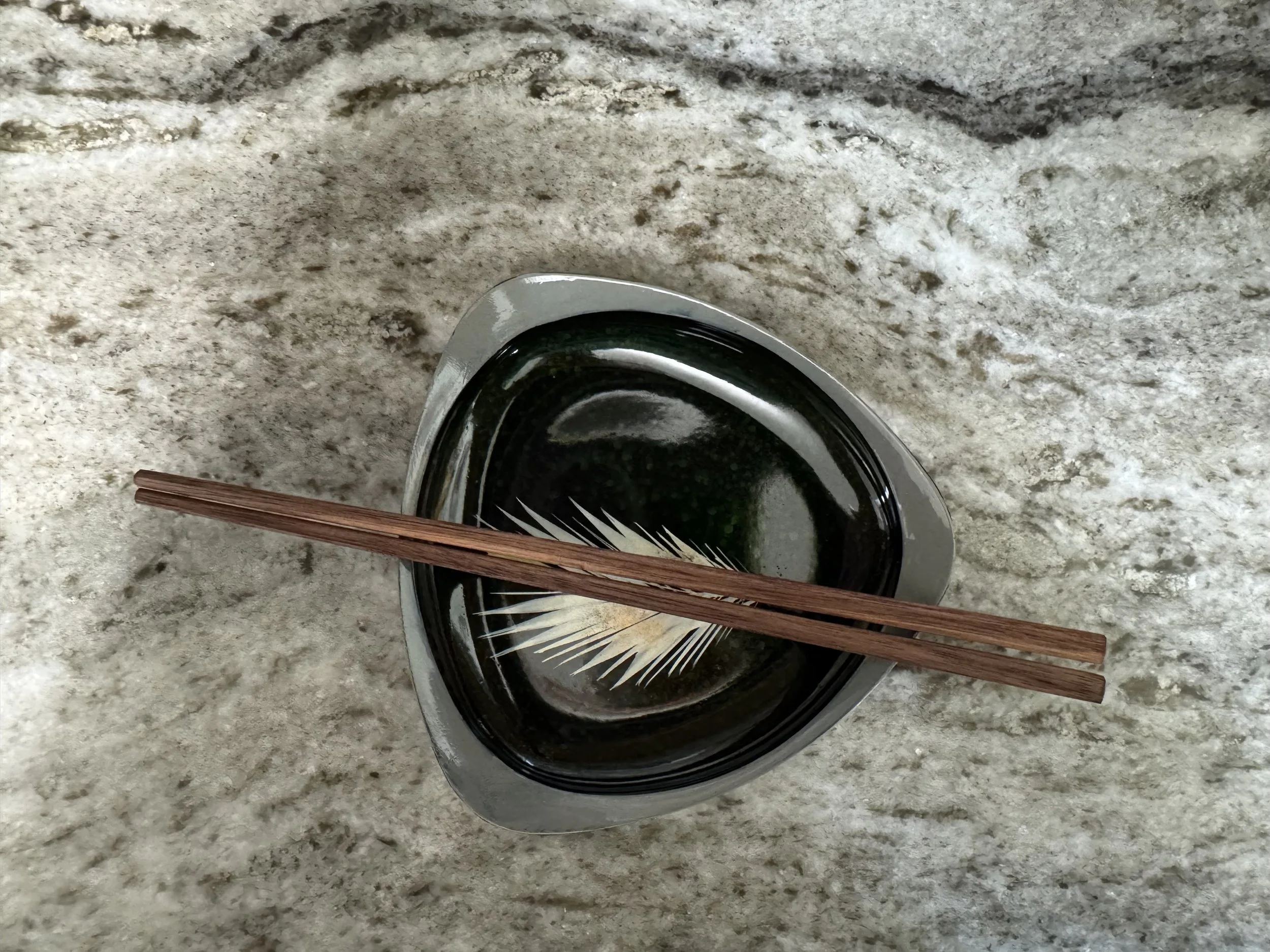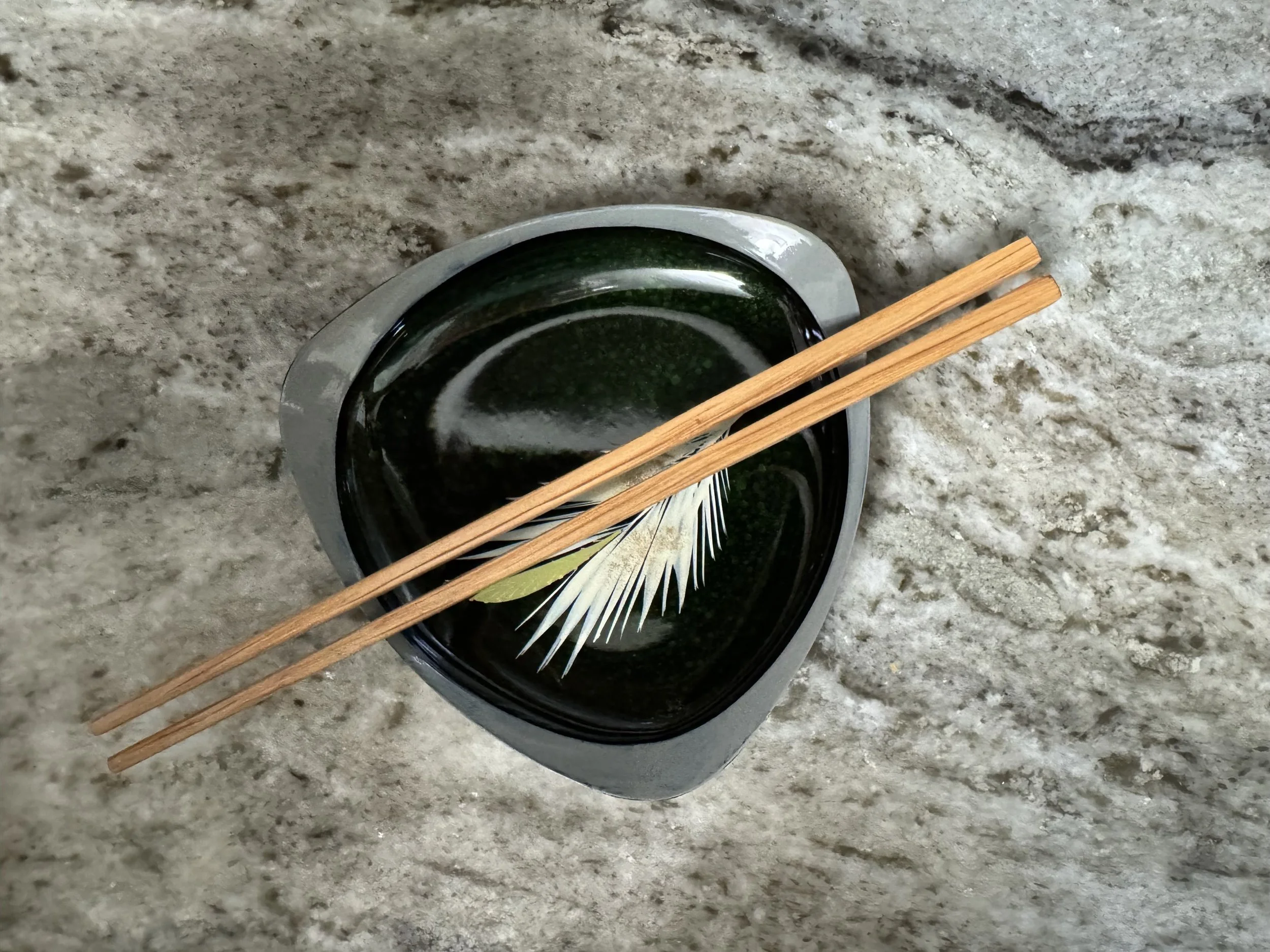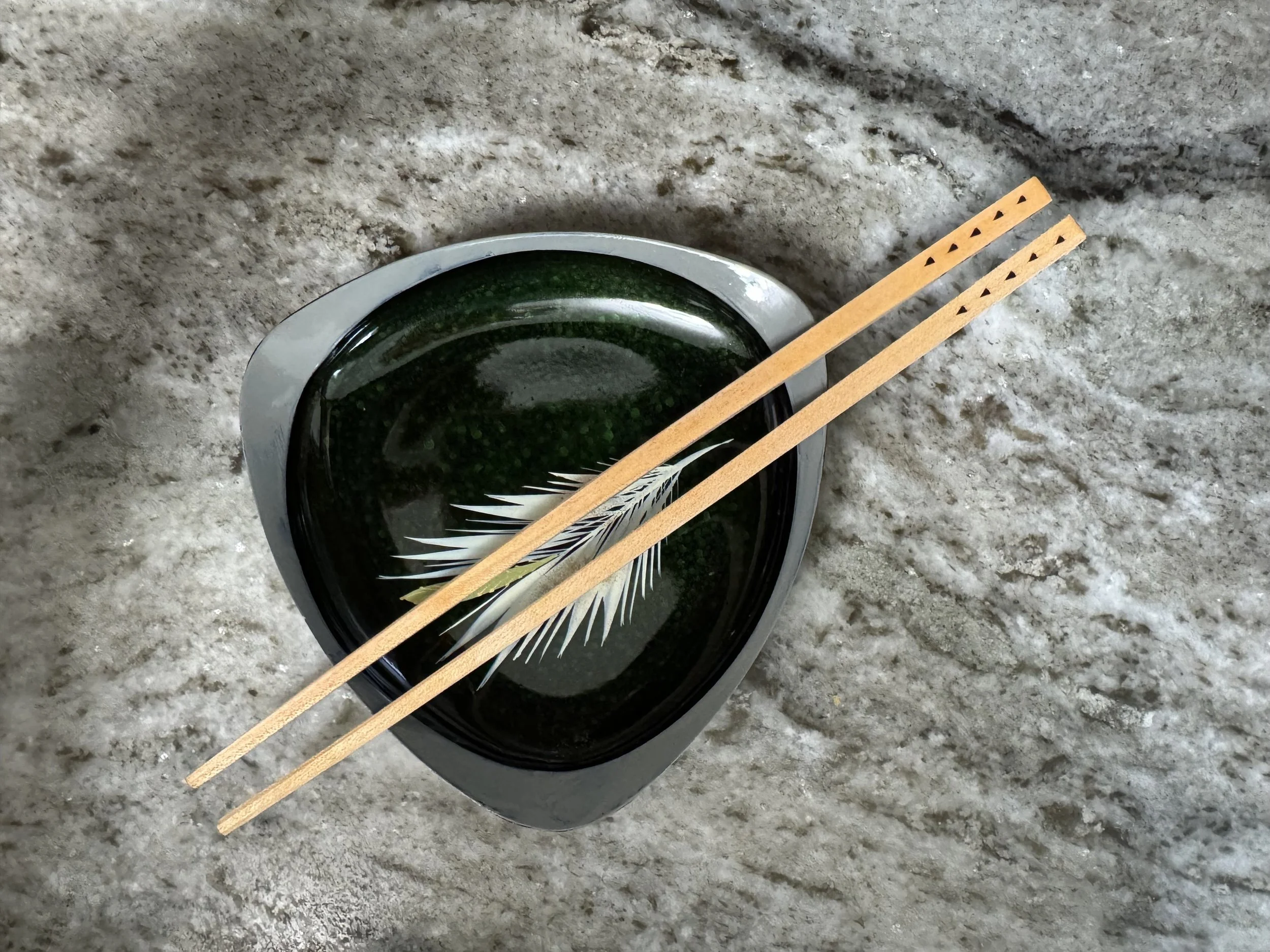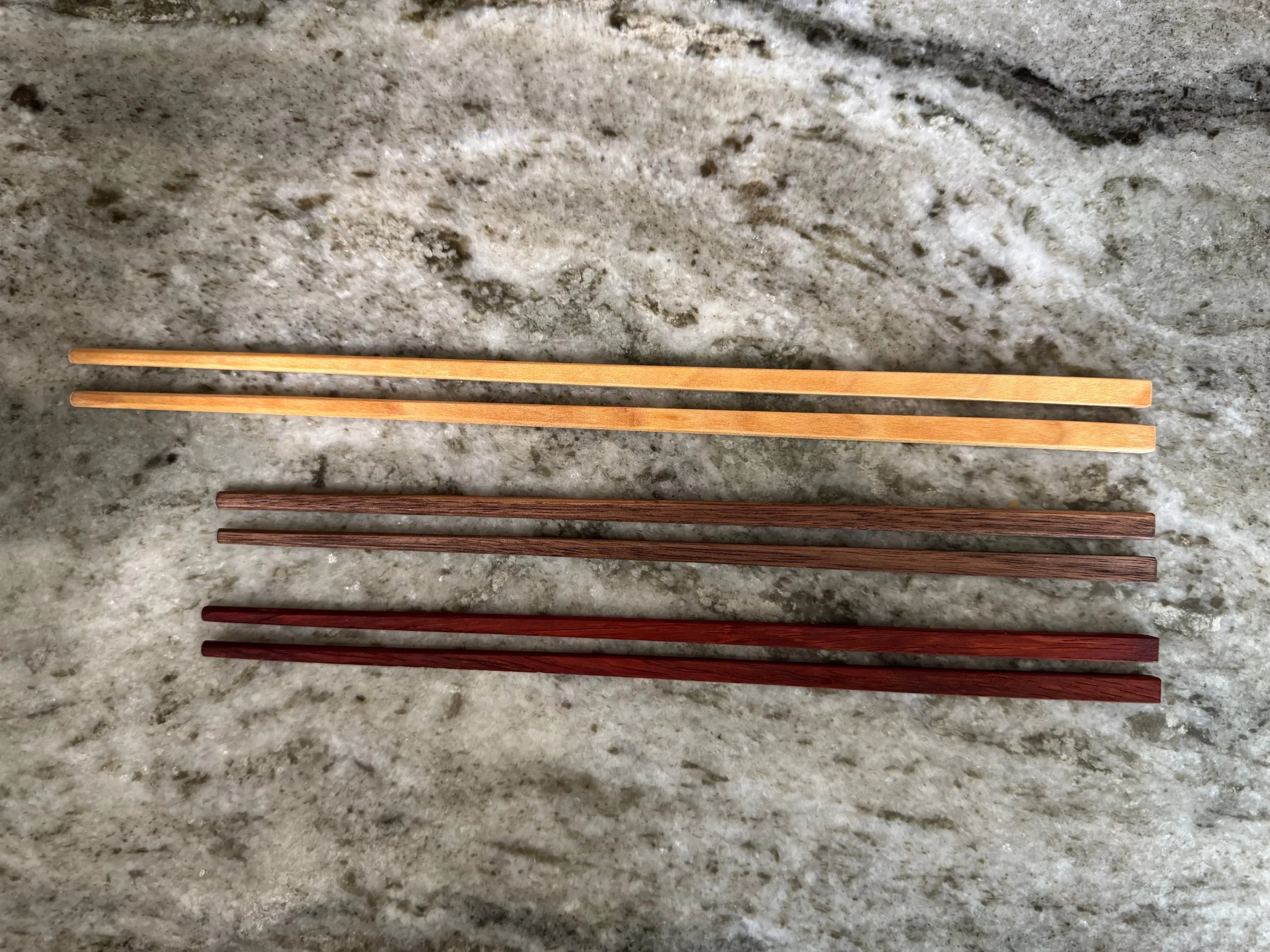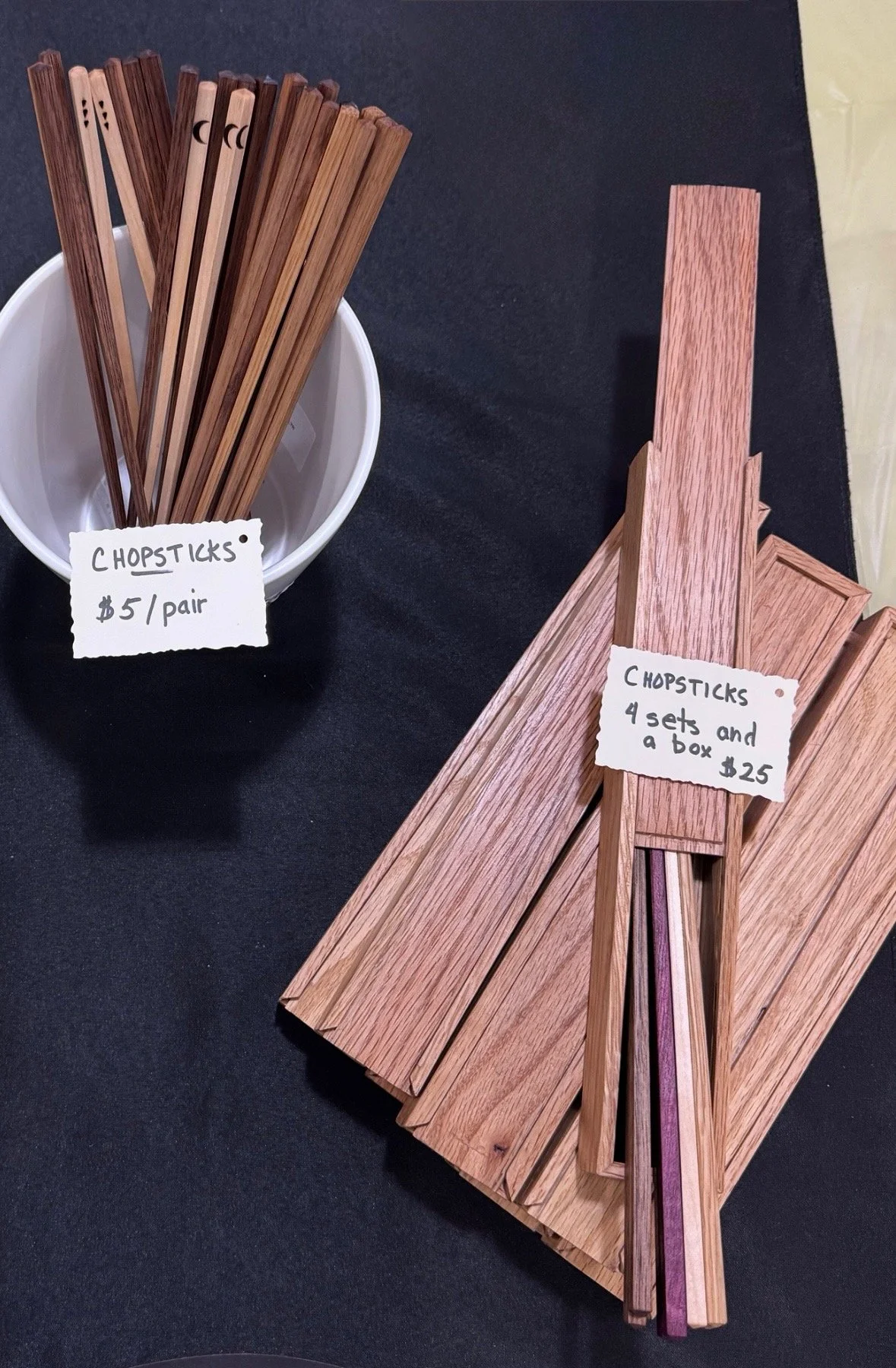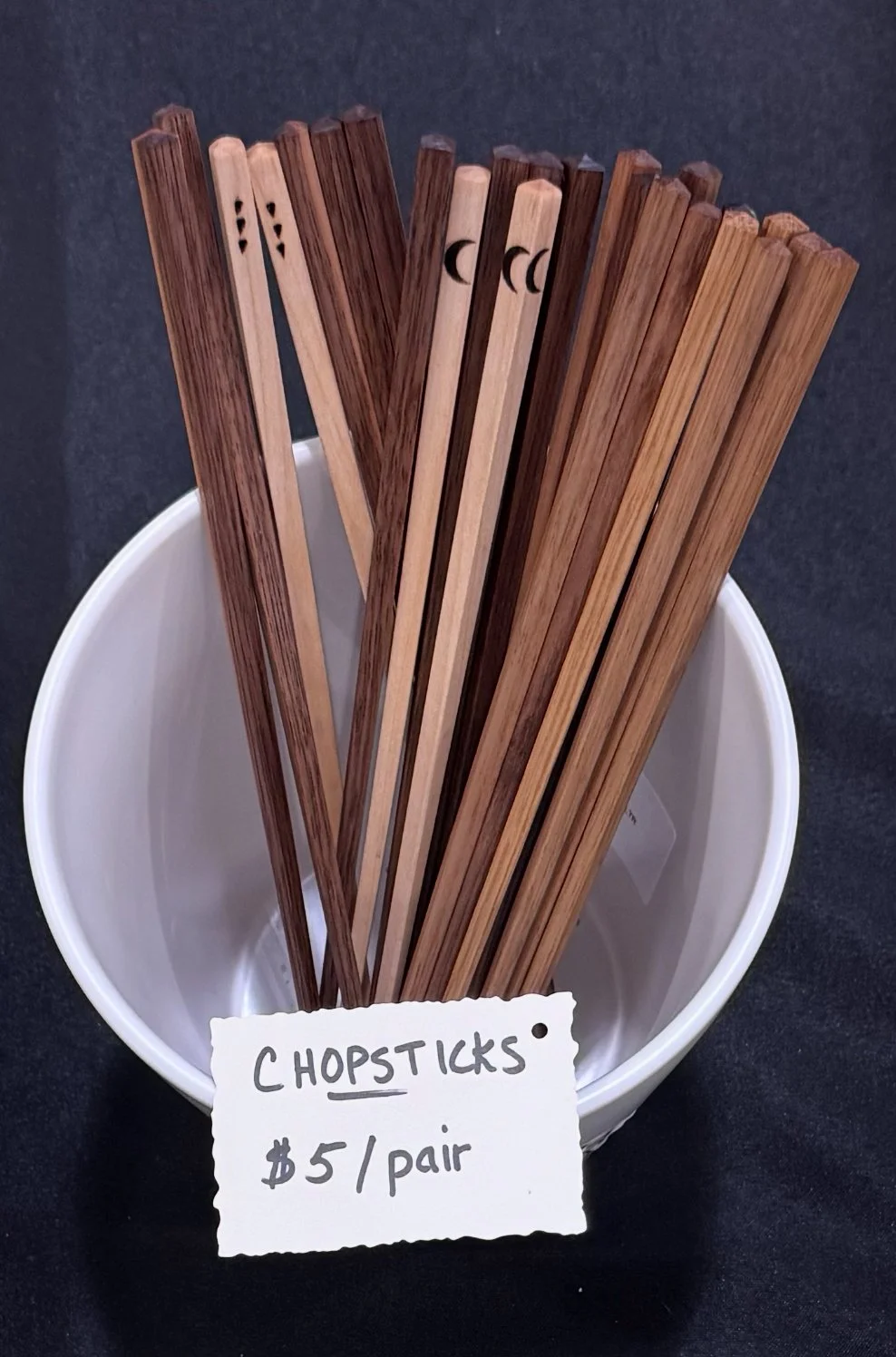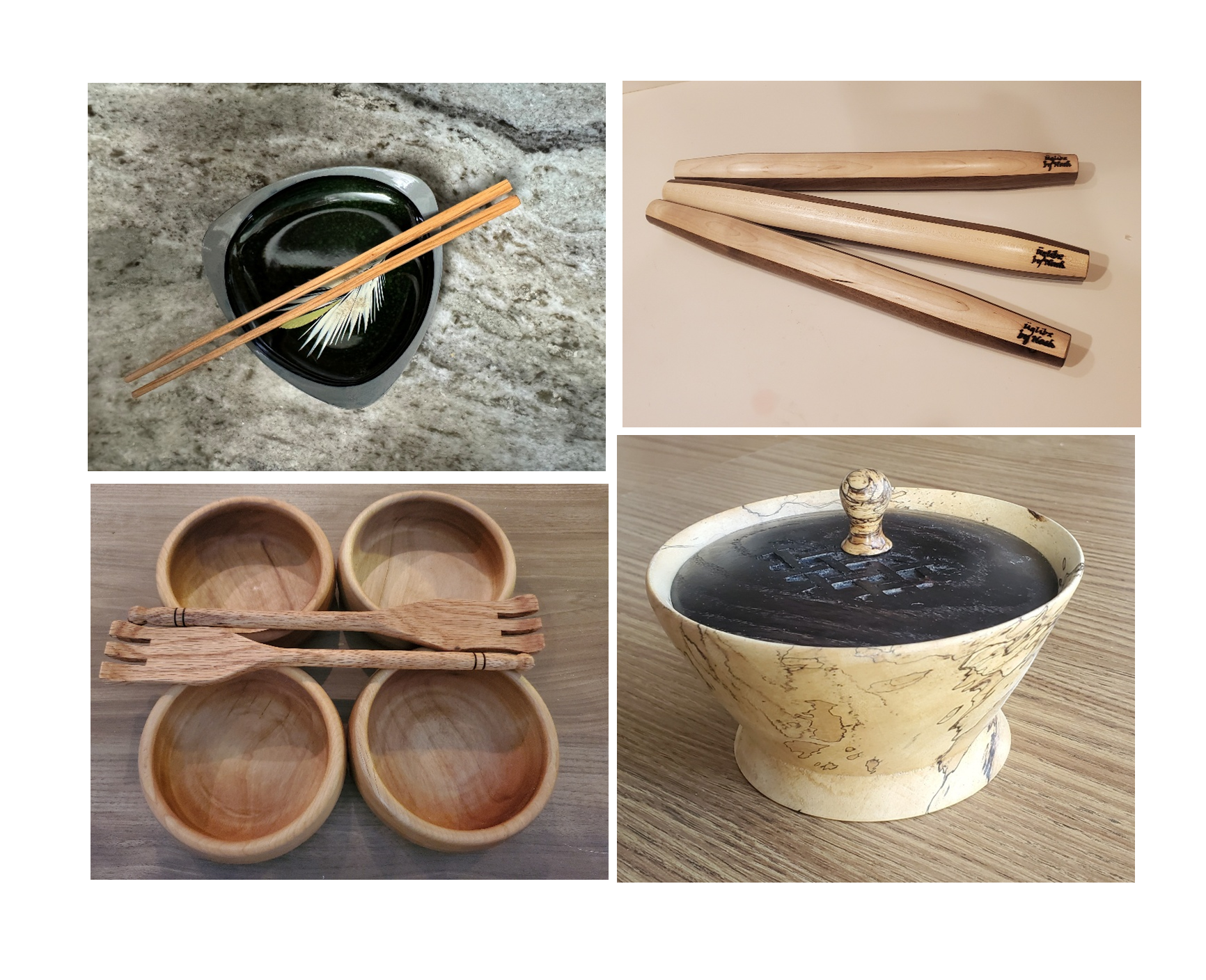Chopstics are just chopsticks…or are they?
Having lived in Japan for a time, I discovered the utility of the utensil. I have found that the differences between Japanese o-hashi おはしand Chinese kuàizi 筷子 are subtle, yet significant to a regular patron of Japanese and Chinese dining establishments.
The Japanese version, ohashi, (pronounced “o” like the “o” in go), “ha” like in hawk, and “shi” like in sheep). is shorter and more slender at the tip - great for handling sushi and sashimi.
The Chinese version, kuàizi, (pronounced “kwai” rhymes with wy,h and zi sounds like dzuh) is great for large shared serving bowls found in traditional Chinese dining.
We make both!
Almost Anything chopsticks are made from walnut, maple, quarter-sawn oak, cherry, and occasionally other materials like purple heart and rosewood.
Almost Anything chopsticks are made from walnut, maple, quarter-sawn oak, cherry, and occasionally other materials like purple heart and rosewood.joy
Japanese style chopsticks or ohashi, use them to savor a variety of dishes ranging from sushi and sashimi to noodles and rice. Their tapered tips allow for precise picking and handling of delicate ingredients, enhancing the overall dining experience. These chopsticks can also serve as a cultural element, bringing authenticity to Japanese meals prepared at home or in a dining setting. Proper care involves hand washing, drying and oiling with a food-safe oilto maintain their finish and longevity.
